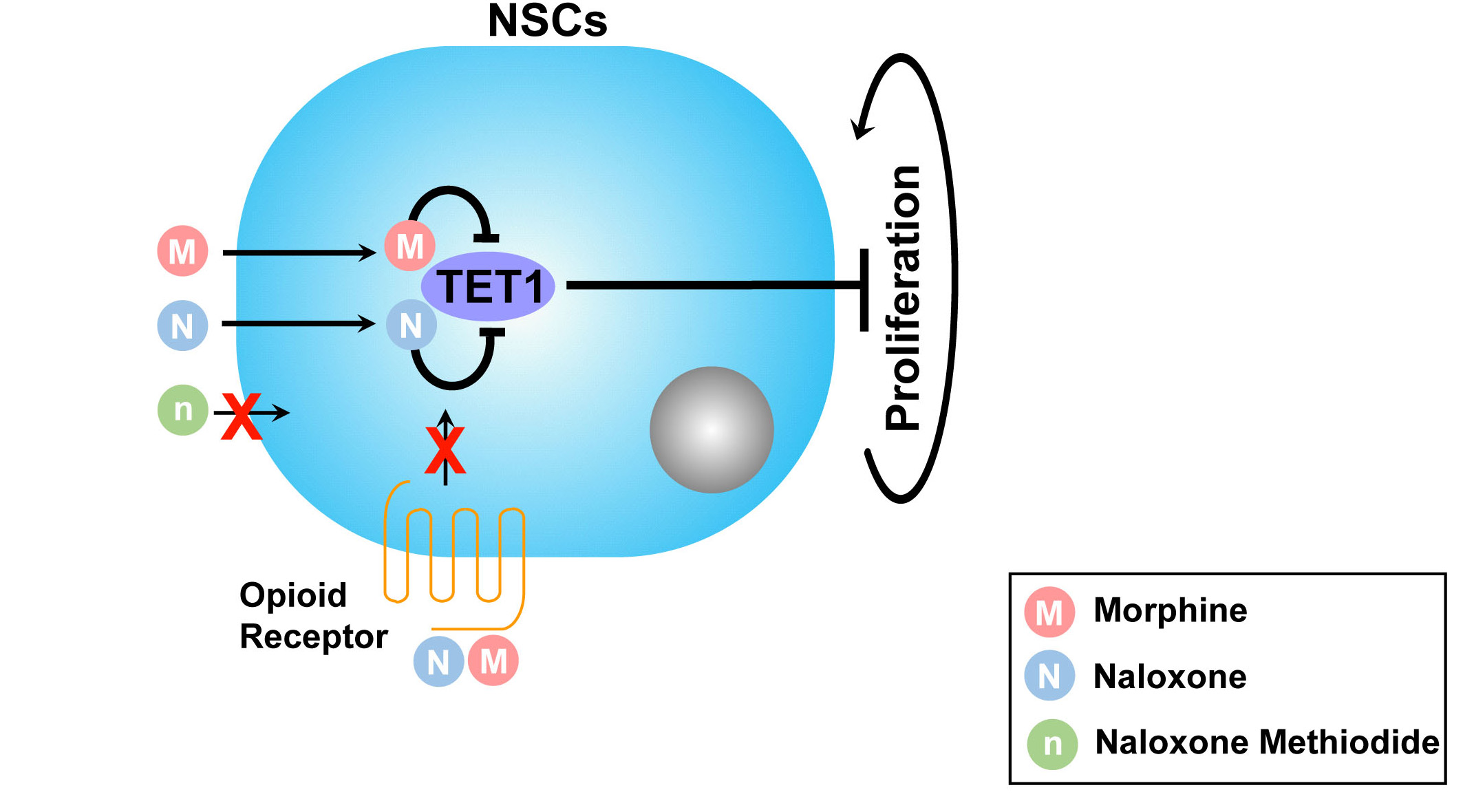Naloxone and morphine, two opioids, are found to function and facilitate the proliferation of Neural Stem Cells (NSCs), a recent study by scientists from the Guangzhou Institutes of Biomedicine and Health (GIBH) revealed.
The two opioids facilitate NSC proliferation via a receptor-independent and ten-eleven translocation methylcytosine dioxygenase 1 (TET1)-dependent pathway. Morphine and naloxone penetrate cell membrane, bind to TET1 protein via three key residues, and subsequently result in facilitated proliferation of NSCs, according to the study.
Opioids, have long been used as an old and powerful pain killer, through acting on the central nervous system. However, chronical or repetitive administration of opioids results in significant side effects, including the development of tolerance and addiction. Therefore, the connection between opioids and neural stem cells (NSCs) has attracted great attention of scientists.
“To determine whether opioids use a receptor-independent pathway to affect NSCs, we investigated the functions of morphine (an opioid agonist) and naloxone (an opioid antagonist) during NSC proliferation,” said ZHENG Hui, leading scientist of the study, from GIBH.
According to the study, NSCs show accelerated proliferation when morphine and naloxone were used simultaneously. The two opioids should affect NSC proliferation via intracellular and receptor-independent pathways, scientists suggested.
Further study also demonstrate that the two opioids inhibit the DNA demethylation ability of TET1. “Current results connect opioids and DNA demethylation directly at least in NSCs and extend our understanding on both opioids and NSCs,” said ZHENG.
The study provides a new perspective for investigation of opioids’ regulation of the neural system.
Results of the study was published online in Cell Reports on March 17, entitled “Morphine and Naloxone Facilitate Neural Stem Cells Proliferation via a TET1-dependent and Receptor-independent Pathway”.
This work was supported by the Strategic Priority Research Program of CAS, the Key Research Program of Frontier Sciences, CAS, the National Natural Science Foundation of China, and the Key Research & Development Program of Guangzhou Regenerative Medicine and Health Guangdong Laboratory, and the Science and Technology Planning Project of Guangdong Province.

Morphine and Naloxone Facilitate Neural Stem Cell Proliferation: Study